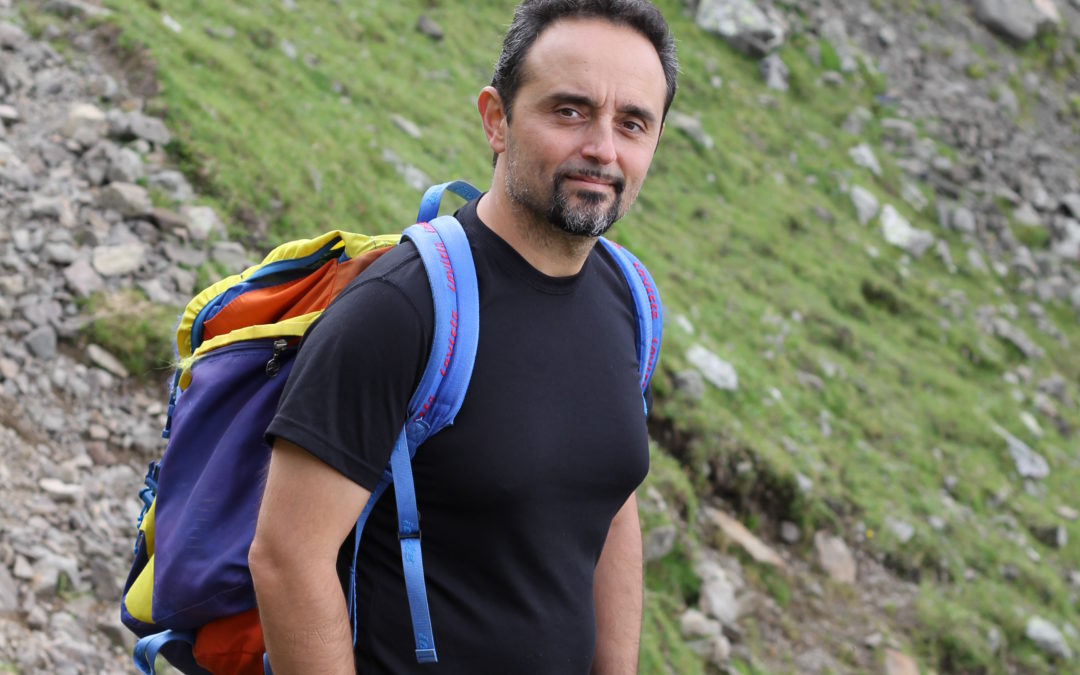By Leon Wang
Our next guest on the Meet a Biomimic series is Alessandro Bianciardi. As an environmental engineer with a wealth of experience, Alessandro works towards solving complex human problems in a more sustainable way. He co-founded Planet, a company dedicated to leading biomimicry education and innovation, and serves as the education and product innovation advisor. He is also the co-founder of Biomimicry Italy, and the team leader for Team Planet, a finalist team currently participating in the first-ever food system Biomimicry Accelerator in the Biomimicry Global Design Challenge. Read on to learn more about his journey.
What is your current job and how do you incorporate biomimicry into your work or life?
I am an environmental engineer with 20 years of experience in formulation and implementation of environmental, energy, and development projects. I work as a consultant for international organizations such as the European Commission and the UNDP, consulting companies, and NGOs. I try to apply the biomimicry approach in my work and in order to be more effective, I established a startup called Planet together with other passionate biomimics. The company is fully dedicated to furthering nature-inspired technology and biomimicry education. As the education and product innovation advisor, my main responsibilities are scientific coordination, activities identification, and coordination of team of experts in applying biomimicry thinking.
How did you get to where you are today? What paths led you to biomimicry?
After years of working on projects in environment and sustainable development around the world, I realized that complex problems can only be solved through multidisciplinary approaches and setting people with the right mindset. Learning education for sustainability became one of my goals in order to educate people on sustainability and how to cooperate together to solve problems. During my learning process (especially at Schumacher College in the UK), I stumbled on biomimicry. I saw this common language (the language of nature) as a great tool for sustainable innovation, making it possible to pull different people to work together… so I went for it!
How are you making an impact?
I make an impact by practicing biomimicry in solving societal challenges. I apply the methodology to achieve results so that I can demonstrate that biomimicry really works. As a lecturer, workshop developer, and facilitator, I actively spread biomimicry teachings. In doing so, I involve young people who slowly get biomimicry training, setting them up to become positive change agents in the world. I have also set up Biomimicry Italy, a website to promote biomimicry in Italy at a public level.
What advice do you have for others who are looking to enter the field of biomimicry or hoping to incorporate it into their work?
Talking about biomimicry to inspire people is one thing; practicing it is a whole other world. You will only appreciate biomimicry if you challenge yourself to practice it. This means having and developing a passion for problem solving. You can incorporate biomimicry in your work or anything else you do by starting from small considerations. Take the time to understand the challenge in all its complexity, and then go through the biomimicry thinking process to take steps towards a solution. I have also found that it is important to acknowledge your limits and look for help. Biomimicry is transdisciplinary – you cannot do it alone.
What do you need next to do what you want to do in the world?
There is the need for tools for financing multidisciplinary biomimicry projects. I would like to set up multidisciplinary teams and connect experts in different fields to focus on important challenges. I would love to work with people who are truly motivated in solving problems in a more sustainable way. Our world needs people who really want to make a difference and not those who are only in it for monetary gains.

